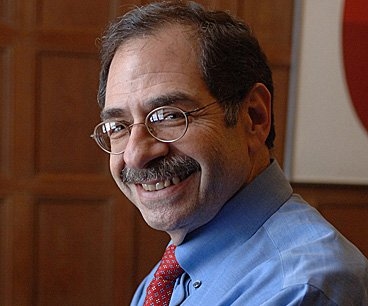The White House announced today that President Barack Obama intends to nominate MIT’s Marc Kastner to head the Department of Energy’s Office of Science, which manages much of the nation’s basic research on energy.
Kastner is the dean of MIT’s School of Science, as well as the Donner Professor of Physics. He has been on the MIT faculty since 1973 and has led MIT’s Department of Physics and its Center for Materials Science and Engineering.
“In nominating Dean Kastner to head the Department of Energy’s Office of Science, President Obama made an inspired choice,” MIT President L. Rafael Reif says. “A brilliant physicist and highly effective manager, Marc Kastner is ideally suited to manage DOE’s basic science portfolio and its network of national labs. Through his leadership of MIT’s School of Science, he has an unrivaled grasp of the nation’s scientific enterprise and a record of attracting exceptional talent. He argues eloquently for the value of basic science but has worked with equal enthusiasm to help MIT faculty transform emerging ideas into important real-world technologies. He knows the challenges of building a sustainable energy future, and I can think of no one better to help the U.S. seize the opportunities, as well.”
The DOE’s Office of Science is the single largest supporter of basic research in the physical sciences in the United States, with a 2013 budget of $4.9 billion. The office is also responsible for 10 of DOE’s 17 laboratories, including Brookhaven National Laboratory, the Fermi National Accelerator Laboratory, and Lawrence Berkeley National Laboratory.
MIT’s School of Science, which Kastner has led since 2007, includes the departments of Biology; Brain and Cognitive Sciences; Chemistry; Earth, Atmospheric and Planetary Sciences; Mathematics; and Physics. The school is home to approximately 300 faculty, 1,200 graduate students, and 1,000 undergraduate majors.
Kastner’s major accomplishments as dean of science have included:
- hiring 12 tenured and 72 tenure-track faculty members;
- helping the departments of Mathematics and Chemistry secure funding to renovate Building 2;
- helping provide seed funds that led to the creation of the National Science Foundation-funded Center for Brains, Minds, and Machines; and
- helping faculty and staff at the MIT Kavli Institute for Astrophysics and Space Research secure resources to successfully compete in a three-year competition for the NASA-funded Transiting Exoplanet Survey Satellite (TESS) project.
After earning a B.S. in chemistry, an M.S. in physics, and a Ph.D. in physics from the University of Chicago, Kastner spent a year as a Harvard Research Fellow before joining the MIT faculty.
His early research focused on the electronic and optical properties of amorphous semiconductors. He has also studied the physics of high-temperature superconductors, especially the relationship of their magnetic properties to their electron transport. In 1990 Kastner’s research group fabricated the first semiconductor single-electron transistor; his group continues to use these devices as tools to study the quantum mechanical behavior of electrons confined to nanometer dimensions.
Kastner is a member of the National Academy of Sciences and the American Academy of Arts and Sciences, and a fellow of the American Association for the Advancement of Science and the American Physical Society. He has served as chair of the Solid State Sciences Committee of the National Research Council and chair of the National Academy of Sciences Board on Physics and Astronomy.
Kastner has received the Oliver E. Buckley Prize of the American Physical Society, the David Adler Lectureship Award of the American Physical Society, and the DOE Division of Materials Sciences Outstanding Scientific Accomplishment Award.







